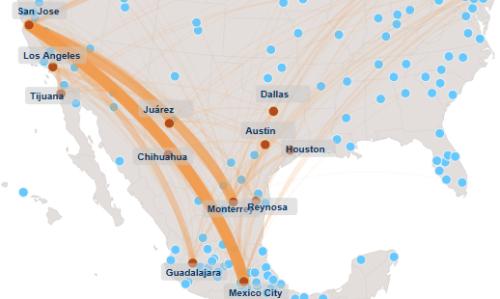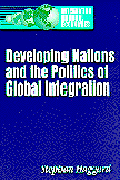Today, Vice President Biden and members of President Obama’s cabinet will lead an American delegation in the first meeting of the recently christened U.S.-Mexico High Level Economic Dialogue (HLED) in Mexico City. There, they will sit with Mexican President Peña Nieto and their ministerial counterparts to discuss the future of the bilateral relationship.
As critical as national leaders and institutions remain in setting trade and investment policy, the HLED must acknowledge a simple truth: Shared competitiveness will largely be determined in the hundreds of other cities and regions that now define the U.S.-Mexico economy.
Simply put, cities and metropolitan areas are the engines of each national economy and centers for the incredible volume of bilateral trade. U.S. metropolitan areas contain 84 percent of our population but generate 91 percent of GDP. Mexico, for its part, houses 58 percent of its population in metro areas and those places generate 74 percent of national GDP.
It is little surprise, then, that metro economies also drive trade between the nations. Of the $379 billion in two-way goods trade in 2010, well over 60 percent flowed between a network of approximately 400 metro areas according to an upcoming Brookings report.
Shares of metro trade are even higher for key advanced industries such as aerospace, automotive and advanced electronics. Firms in these manufacturing sectors now locate different stages of production in each country to maximize cost-efficiency and product quality. As a result, products in advanced industry are increasingly co-produced, with firms in each country providing distinct value-added tasks. Regardless of which side of the border, advanced industries require the interplay of skilled workers, specialized capital investment, and advanced research typically found in metro areas. Metro-to-metro trade accounts for 77 percent of bilateral trade of aircraft, 76 percent in electronics and electrical equipment, and 74 percent of motor vehicles and parts.
Production sharing not only minimizes the cost of goods consumed in each country, but makes products exported to the rest of the world more competitive. In 2011, the North American bloc sent over $1.2 trillion in goods outside the region. North America’s base of free trade and its growing reliance on co-production in key advanced industries position the continent to be a production platform for both itself and the rest of the world. Beyond these two longer term dynamics, three advantages appear to be favoring the continental production platform: rising Chinese wages, transportation and logistical advantages from geographic proximity, and production-enhancing technological advancements.
Indeed, if there is to be a “manufacturing renaissance” in the United States, it needs to embrace Mexico as a partner rather than a competitor. Appropriately, the HLED is part of a broader effort by the two countries to upgrade policies, regulations, and investments to match the deep and broad integration of the U.S. and Mexican economies.
The Brookings Institution is committed to quality, independence, and impact.
We are supported by a diverse array of funders. In line with our values and policies, each Brookings publication represents the sole views of its author(s).











Commentary
Why the U.S.-Mexico High Level Economic Dialogue Should Engage Sub-National Leaders
September 20, 2013